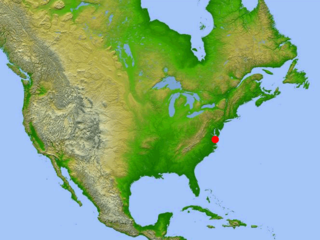 W
WThe 1792 Unzen earthquake and tsunami resulted from the volcanic activities of Mount Unzen on 21 May. This caused the collapse of the southern flank of the Mayuyama dome in front of Mount Unzen, resulting in a tremendous megatsunami, killing 15,000 people altogether. It was also called Shimabara erupted, Higo affected (島原大変肥後迷惑), since many people were killed by this tsunami in Higo.
 W
WThe 1958 Lituya Bay earthquake occurred at July 9 at 22:15:58 with a moment magnitude of 7.8 and a maximum Mercalli intensity of XI (Extreme). The strike-slip earthquake took place on the Fairweather Fault and triggered a rockslide of 40 million cubic yards into the narrow inlet of Lituya Bay, Alaska. The impact was heard 50 miles (80 km) away, and the sudden displacement of water resulted in a megatsunami that washed out trees to a maximum elevation of 1,720 feet at the entrance of Gilbert Inlet. This is the largest and most significant megatsunami in modern times; it forced a re-evaluation of large-wave events and the recognition of impact events, rockfalls, and landslides as causes of very large waves.
 W
WIcy Bay is a body of water in Southeast Alaska, formed in the last 100 years by the rapid retreat of the Guyot, Yahtse, and Tyndall Glaciers. It is part of the Wrangell-Saint Elias Wilderness.
 W
WThe Chesapeake Bay impact crater was formed by a bolide that impacted the eastern shore of North America about 35.5 ± 0.3 million years ago, in the late Eocene epoch. It is one of the best-preserved "wet-target" impact craters in the world.
 W
WThe Cretaceous–Paleogene (K–Pg) extinction event, also known as the Cretaceous–Tertiary (K–T) extinction, was a sudden mass extinction of three-quarters of the plant and animal species on Earth, approximately 66 million years ago. With the exception of some ectothermic species such as the sea turtles and crocodilians, no tetrapods weighing more than 25 kilograms survived. It marked the end of the Cretaceous period, and with it the end of the entire Mesozoic Era, opening the Cenozoic Era that continues today.
 W
WThe Eltanin impact is thought to be an asteroid impact in the eastern part of the South Pacific Ocean during the Pliocene-Pleistocene boundary around 2.51 ± 0.07 million years ago. The location was at the edge of the Bellingshausen Sea 1,500 km (950 mi) southwest of Chile. The asteroid was estimated to be about one to four km in diameter and the impact would have left a crater approximately 35 km (22 mi) across.
 W
WThe 1883 eruption of Krakatoa in the Sunda Strait began on the afternoon of Sunday, 26 August 1883—with origins as early as that May—and peaked on the late morning of Monday, 27 August 1883, when over 70% of the island of Krakatoa and its surrounding archipelago were destroyed as it collapsed into a caldera.
 W
WThe Minoan eruption was a major catastrophic volcanic eruption that devastated the Aegean island of Thera in around 1600 BCE. It destroyed the Minoan settlement at Akrotiri, as well as communities and agricultural areas on nearby islands and the coast of Crete with subsequent earthquakes and tsunamis. With a VEI magnitude between 6 and 7, resulting in an ejection of approximately 60 km3 (14 cu mi) of dense-rock equivalent (DRE), the eruption was one of the largest volcanic events on Earth in human history.
 W
WOn March 27, 1980, a series of volcanic explosions and pyroclastic flows began at Mount St. Helens in Skamania County, Washington, United States. It initiated as a series of phreatic blasts from the summit then escalated on May 18, 1980, as a major explosive eruption. The eruption, which had a Volcanic Explosivity Index of 5, was the most significant to occur in the contiguous 48 U.S. states since the much smaller 1915 eruption of Lassen Peak in California. It has often been declared the most disastrous volcanic eruption in U.S. history.
 W
WThe three Storegga Slides are considered to be amongst the largest known submarine landslides. They occurred under water, at the edge of Norway's continental shelf in the Norwegian Sea, approximately 6225–6170 BCE. The collapse involved an estimated 290 km (180 mi) length of coastal shelf, with a total volume of 3,500 km3 (840 cu mi) of debris, which caused a megatsunami in the North Atlantic Ocean.